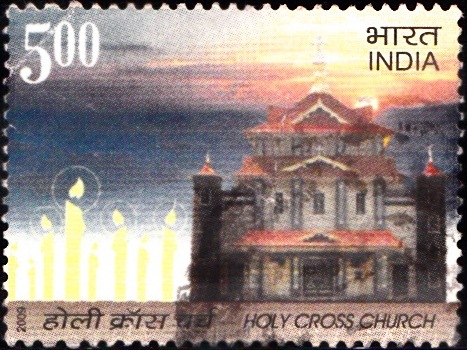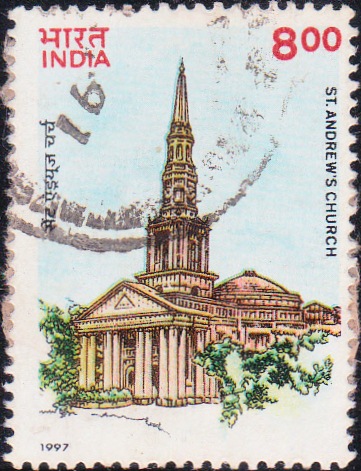
UNESCO World Heritage Sites in India – III
A Miniature Sheet consisting of 5 nos. of postage stamp on the UNESCO World Heritage Sites : Cultural Sites :
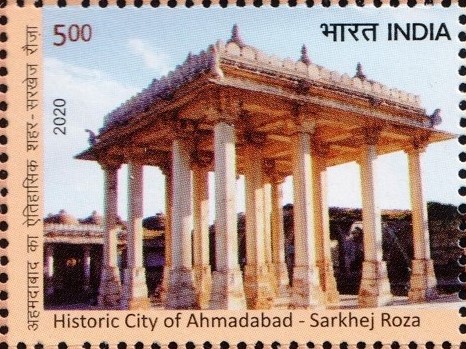

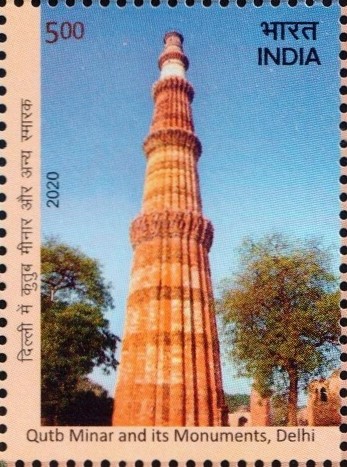

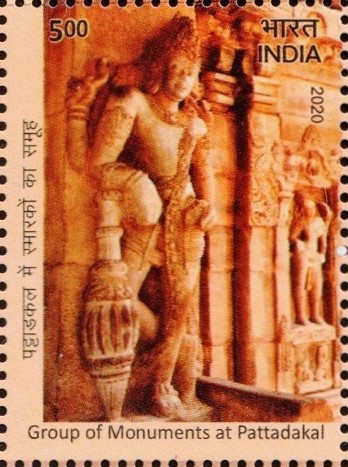

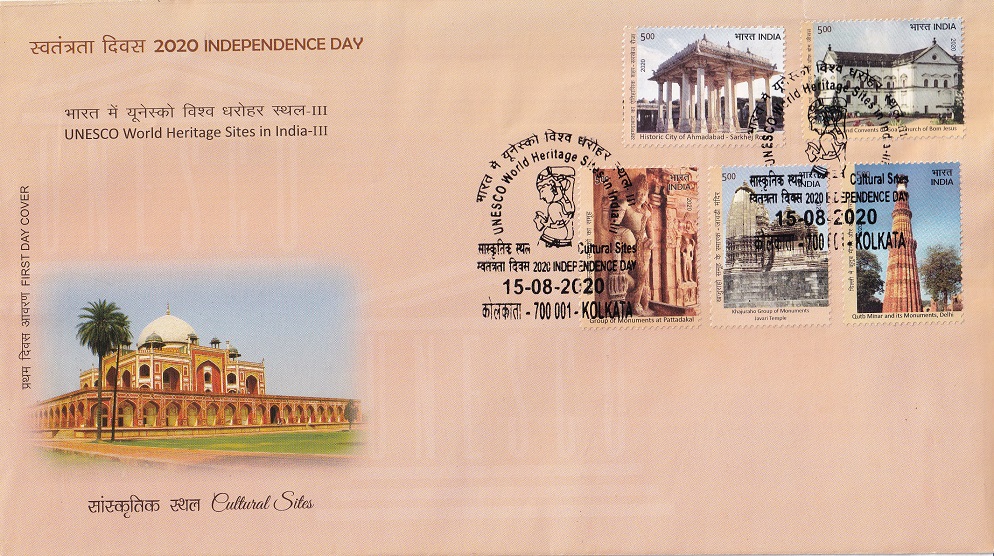
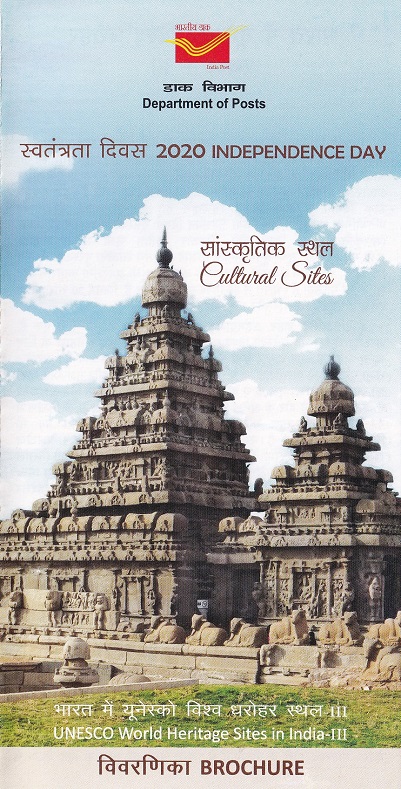 Issued by India
Issued by India
Issued on Aug 15, 2020
Issued for : Department of Posts is glad to issue a set of five Commemorative Postage Stamps and a Miniature Sheet on UNESCO World Heritage Sites in India-III. The stamps have been designed based on the photographs of the prize-winning entries.
Credits :
Stamps/Miniature Sheet/FDC/Brochure : Smt. Nenu Gupta. Based on the photographs of the prize-winning entries
Cancellation Cachet : Smt. Nenu Gupta
Type : Miniature Sheet, Mint Condition
Colour : Multi Colour
Denomination : 500 Paise (5)
Stamps Printed : 500000 each
Miniature sheets printed : 110000
Printing Process : Wet Offset
Printer : Security Printing Press, Hyderabad
About :
- Department of Posts has been conducting Stamp Design competitions since 2015 to commemorate Independence Day, Republic Day and Children’s Day at the National level. Based on the prize-winning entries, stamps are designed and released to mark the occasion. This year too, Department of Posts conducted a nationwide Photography contest for Stamp Design, on the theme UNESCO World Heritage Sites in India (Cultural). The first three winners are Ms Sanya Khandale, Ms Madhu Tripathi and Ms Poonam Amol Bhosale. Five consolation prize winners are Sr Jousse, Mr Saksham Saxena, Mr Hardik Kansara, Ms Arishna Kamran and Mr Atul Padia. There are 38 World Heritage Sites located in India. These include 30 Cultural sites, 7 Natural sites and 1 Mixed site.
- One of the prominent landmarks of the Historic City of Ahmadabad a UNESCO World Heritage site, the Sarkhej Roza is known for its rich history and reverence. The architecture of the complex is credited to Azam and Muazzam Khan; two Persian brothers who are buried in the tomb near Vasna, Ahmedabad. Like many monuments built during that period, the Sarkhej Roza fused both non-Indian and Indian principles of architecture. In its architecture, Sarkhej Roza is an example of the early Islamic architectural culture of the region, which fused Islamic stylistic influences from Persia with Indian Hindu and Jain features to form a composite Indo-Saracenic architectural site.
- The Church of Bom Jesus is a Roman Catholic basilica located in Goa, and is part of the Churches and Convents of Goa UNESCO World Heritage Site. The basilica holds the mortal remains of St. Francis Xavier. ‘Bom Jesus’ (literally, ‘Good (or Holy) Jesus’) is the name used for the Ecce Homo in the countries of Portuguese colonization. Construction work on the church began in 1594. The church was consecrated in May 1605 by the archbishop, Dom Fr. Aleixo de Menezes. This is one of the oldest churches in Goa and in India. The floor is of marble inlaid with precious stones. Apart from the elaborate gilded altars, the interior of the church is simple.
- The Qutb Minar, is a victory tower that forms part of the Qutb Minar and its Monuments, Delhi, a UNESCO World Heritage Site. Qutubuddin Aibak, at that time a deputy of Muhammad of Ghor, but after his death, founder of the Delhi Sultanate, started construction of the Qutb Minar’s first storey in 1199. It has a height of 72.5 meters, making it the tallest minaret built of bricks in the world. The surface is elaborately decorated with inscriptions and geometric patterns. The tower has five superposed storeys. The lower three comprise fluted cylindrical shafts or columns of pale red sandstones, separated by flanges and by storied balconies. The fourth column is of marble, and is relatively plain. The fifth is of marble and sandstone. The whole tower contains a spiral staircase of 379 steps.
- Located in Madhya Pradesh, Khajuraho Group of Monuments is a famous UNESCO World Heritage site renowned for a group of Hindu and Jain temples, well known for their Nagara style symbolism. The Javari temple is one of the most prominent of all of these temples in the Khajuraho complex. It was built between 975 and 1100 A.D. The temple is dedicated to the Hindu deity Vishnu. It has well-proportioned architecture, with a sanctum, vestibule, mandapa and portico, but without pradakshinapatha. It has Makara Torana (Capricorn Arch) and shikhara (top). It has three bands of carved sculptures on the outer wall. The entrance gate of sanctum has sculptures depicting nava-graha on the top. Along with nava-graha sculptures, sculpture of the Hindu deities Brahma, Vishnu and Shiva can also be seen.
- Group of Monuments at Pattadakal is a complex of 7th and 8th century AD Hindu and Jain temples in northern Karnataka. Located on the west bank of the Malaprabha River in Bagalakote district, this UNESCO World Heritage site is 14 miles (23 km) from Badami and about 6 miles (9.7 km) from Aihole, both of which are historically significant centres of Chalukya monuments. The Hindu temples are generally dedicated to Shiva, but elements of Vaishnavism and Shaktism theology and legends are also featured. The friezes in the Hindu temples display various Vedic and Puranic concepts, depict stories from the Ramayana, the Mahabharata, the Bhagavata Purana, as well as elements of older Hindu texts, such as the Panchatantra and the Kirātārjunīya. The Jain temple is only dedicated to a single Jina. A number of inscriptions in the old Kannada language have been found at the complex.
- Text : Shri Pallab Bose





